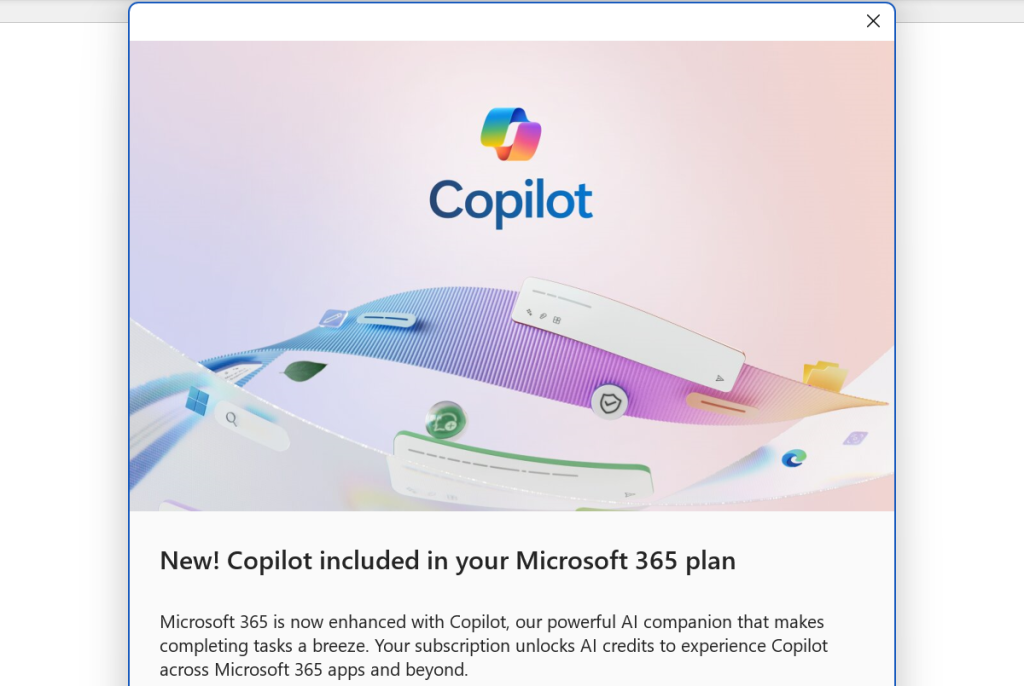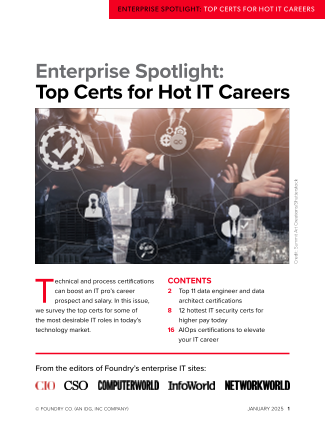Enterprise computers are often the ugly ducklings of the PC world, viewed as dull, slow and less feature-rich than their consumer counterparts. But vendors at last week’s Consumer laptop Show launched a selection of business machines (alongside their consumer offerings) hoping to capitalize on the rise of generative AI (genAI).
Despite the focus on AI PCs or Copilot+ PCs, analysts said the vendors might be a bit ahead of the market.
“I liken it to the dot.com era,” said Tom Butler, executive director of portfolio and product management for Lenovo’s worldwide commercial notebook business. “…When the dot.com era kicked off, companies immediately said, ‘I need a dot.com instance.’ …So, it’s very much like that right now. Companies, as we move into this AI PC era, [say] ‘I need an AI PC.’”
Here’s a look at some of the noteworthy business PCs announced at CES 2025 and analysis of whether vendors are hitting the mark for enterprise customers.
Asus
In addition to its Zenbook and Republic of Gamers (ROG) offerings, Asus unveiled the enterprise-focused ExpertBook B5, ExpertBook B3, ExpertCenter P400 AiO, and ExpertCenter P500. Although they’re not Copilot+ PCs (their neural processing unit (NPU) isn’t powerful enough), they qualify as AI PCs; both B5 and B3 laptops include Intel vPro for manageability and have passed the MIL-STD 810H durability tests. Neither is super light, tipping the scales at about 3 pounds.
The B5 supports up to 64GB of RAM and up to a 2TB SSD with RAID support, has an all-metal design, 16-in. screen, and security features including a fingerprint reader, facial recognition, and a smart card reader.
The B3 has either a 14-in. or 16-in. display, supports up to 64GB of RAM and up to 1TB storage in dual SSDs. And it offers a variety of ports — USB-A, USB-C, HDMI, and even an Ethernet port. (The B5 lacks Ethernet, unless you have a USB dongle.)
On the desktop side, the ExpertCenter AiO (all-in-one) comes in two models, one with a 27-in. display, the other with a 24-in. screen. The P500 is a mini tower supporting up to 64GB of RAM and up to 4TB storage on one SSD and one hard drive.
Dell
While Dell’s rebranding plans, announced at CES, might be a bit perplexing, the company did introduce several new Dell Pro models “designed for professional-grade productivity.” They come in several flavors: Base, Plus, and Premium, and all qualify as Copilot+ PCs, based on their specs.
At the Base level, there are the Dell Pro 14 and Dell Pro 16, designed to “deliver essential performance for everyday productivity,” Dell said. They feature Intel Core Ultra 5 processors, 16GB of RAM and 256GB of storage, and screen resolution of 1920×1200 pixels.
The company also announced Dell Pro desktops, powered by either Intel or AMD processors, available in micro, slim, and tower form factors. They are, Dell said, the company’s first commercial desktops with NPUs.
One step up are the Dell Pro 13/14/16 Plus, with up to 32GB of RAM and 1TB of storage. They come in laptop or 2-in-1 form factors and use the same system BIOS to make ordering and management easier for IT departments. Dell claims up to 18.2 hours of battery life for the Pro 14 Plus, and 12.6 hours for the Pro 16 Plus.
At the top of the heap are the Dell Pro 13/14 Premium models. They’re the slimmest and lightest member sof the Pro portfolio, starting at 2.36 pounds. The Dell Pro 13 Premium offers up to 20.8 hours of battery life; the Pro 14 Premium provides up to 21.2 hours. Each can be ordered with an Intel Core Ultra 7 processor, up to 32GB RAM and up to 1TB of storage.
HP
HP’s EliteBook line expanded with the company’s announcement of a trio of Copilot+ PCs. The HP EliteBook Ultra G1i Next Gen AI PC is, HP said, designed for executives, with its 14-in. UWVA OLED screen on the Intel-powered model. (The Qualcomm model offers WLED screen technology.) They can have up to 32GB of RAM and up to 2TB of storage for the Intel version, or 1TB of storage for the Qualcomm version. HP touted “studio quality” microphones and a 9-megapixel camera for high quality video calls.
The HP EliteBook X Flip G1i Next Gen AI PC has multiple use modes, including laptop, tablet, and tent configurations, with up to 32GB of RAM and up to 2TB of storage. Like the Ultra G1i, it has a 14-in. screen, although touch comes standard (it’s an option on the G1i) and it’s a WLED display, not OLED.
The HP EliteBook X G1i Next Gen AI PC is powered by either Intel or AMD chips. The Intel model can hold up to 32GB of RAM; the AMD version offers up to 64GB. Both models can have up to 2TB of storage.
The EliteBook X machines will be available in March, with HP saying only that the Ultra G1i is “coming soon.”
Lenovo
Lenovo launched an impressive array of devices, and the two models specifically aimed at businesses both contained surprises.
The ThinkPad X9 14- and 15-in. Aura Editions are sleek, thin and light notebooks tested to meet MIL-SPEC 810H standards. Lenovo claims all-day battery life,and says the machines are designed to allow easy servicing of the battery and SSD. They offer up to 32GB of RAM and 1TB of storage.
One thing, however, is missing: the X9 is the first ThinkPad to forego the trackstick. Lenovo hastened to note that it’s just for this model — other ThinkPads will continue to have the trademark red nub in the middle of their keyboards.
Two years ago, Lenovo showcased a laptop concept with a rollable screen; this year, that concept became a reality. The ThinkBook Plus Gen 6 Rollable’s 14-in screen expands upwards at the touch of a button, growing to 16.7 inches and providing 50% more screen space. As with the other new models, it offers up to 32GB of RAM and 1TB of storage.
It is not a budget-friendly device, though; prices start at $3,500.
AI a gimmick?
As for whether these systems meet enterprise needs, analysts weighed in on what they’re seeing in the current PC market — and they were somewhat dismissive of the AI hype.
“Current AI features are over-hyped and largely invisible or are seen as ‘that’s nice to have’ to business unless the users are proactive in finding more detailed features,” said Ranjit Atwal, senior director analyst at Gartner. “All in all, businesses are unlikely to pay more than 5% above normal prices for an AI PC.”
“I think the AI laptops are a gimmick for the most part, efforts by the OEMs to stay relevant and bottle lightning if they can,” said Jeremy Roberts, senior research director at Info-Tech Research Group. “I have yet to have any of my enterprise or mid-market clients profess to be excited or tell me they’re changing their refresh cycle or anything to incorporate AI features at the PC level.”
IDC’s Ryan Reith, group vice president, Worldwide Device Trackers, said he saw some interest in AI PCs early in 2024, but noted it has since waned.
“What we gathered throughout most of last year, especially around the middle of the year, is that large enterprises and most developed markets around the world were allocating budget for these genAI PCs,” Reith said. That enthusiasm declined in the second part of 2024 amid concerns that Microsoft and its partners had not delivered on expectations.
What’s important to enterprises
According to Roberts, genAI features have not excited the enterprises he deals with. “Things that excite enterprises are Autopilot compatibility for seamless deployment, TPM chips for encryption, specialized screens to limit viewing angles, decently powerful CPUs/GPUs depending on the use case, and repairability,” he said.
“I don’t think AI features even make the top 10,” Roberts said. “Most organizations won’t be consuming AI features locally anyway — they’ll use cloud services like CoPilot or Gemini.”
Reith cited feedback from the head of commercial sales for a large OEM who said with tightened budgets and uncertainly about what can be achieved with genAI PCs, companies are shifting their spending to mid-range computers. They don’t qualify as Copilot+ devices, but are still very good PCs.
“If you get 200 PCs at a mainstream level, as opposed to 50 at a premium level, they’re going more towards the 200,” he said.
Roberts agreed: “Modern laptops are generally more than capable of handling the typical knowledge worker’s day-to-day. A Dell Latitude 5000 or 7000 (Dell Pro now?) series or a run-of-the-mill ThinkPad from Lenovo won’t struggle with Slack, Teams, or PowerPoint.”
As for what corporate users want, size and weight are often key, Reith said — and companies are now listening to their employees rather than choosing what they think they want.
“The thin and light PCs are the trend,” Atwal said, adding, “businesses essentially want to future proof their PCs with AI capabilities so [want to] have them include an NPU.”
Lenovo’s Butler said the configuration sweet spot has shifted; it’s now 32GB of memory and a minimum 512GB of storage. And screen sizes have edged up.
“Most business laptops are in the 14- to 16-in. range,” said Roberts. “Anything smaller is quite cramped. Anything larger can be cumbersome to lug around — not to mention more expensive.”
Whither AI PCs, then?
Reith and Roberts differ on the fate of the AI PC/Copilot+ PC.
“AI PCs are a solution looking for a problem,” Roberts argued. “Most end user computing managers won’t be swayed by this branding and additional feature set. … AI will continue to be delivered primarily via the cloud. I expect the CoPilot+ PC will go the way of the Ultrabook: branding attached to computers that are only marginally relevant to the people who buy and use them.”
Reith, however, believes it’s more an issue of timing. “There’s a necessity to have on-device AI,” he said. “It’s just getting pushed forward a little bit to when that inflection point really starts to kick in.
“…I’m trying to use my words cautiously, because we do not believe that this is dead in the water. It was a good chance that then passed. It’s just that the timing was really bad, which no one could have predicted. … But nobody’s really backing off of the developments. Supply side is now just shifting some of their business plans around products.
“…Whatever we thought was going to be the genAI PC volume in 2025, it’ll be slightly less than that, in our opinion,” Reith said. “But a lot of that will just get pushed forward to a ramp up that’s maybe more towards the end of this year, and certainly into 2026.”



















